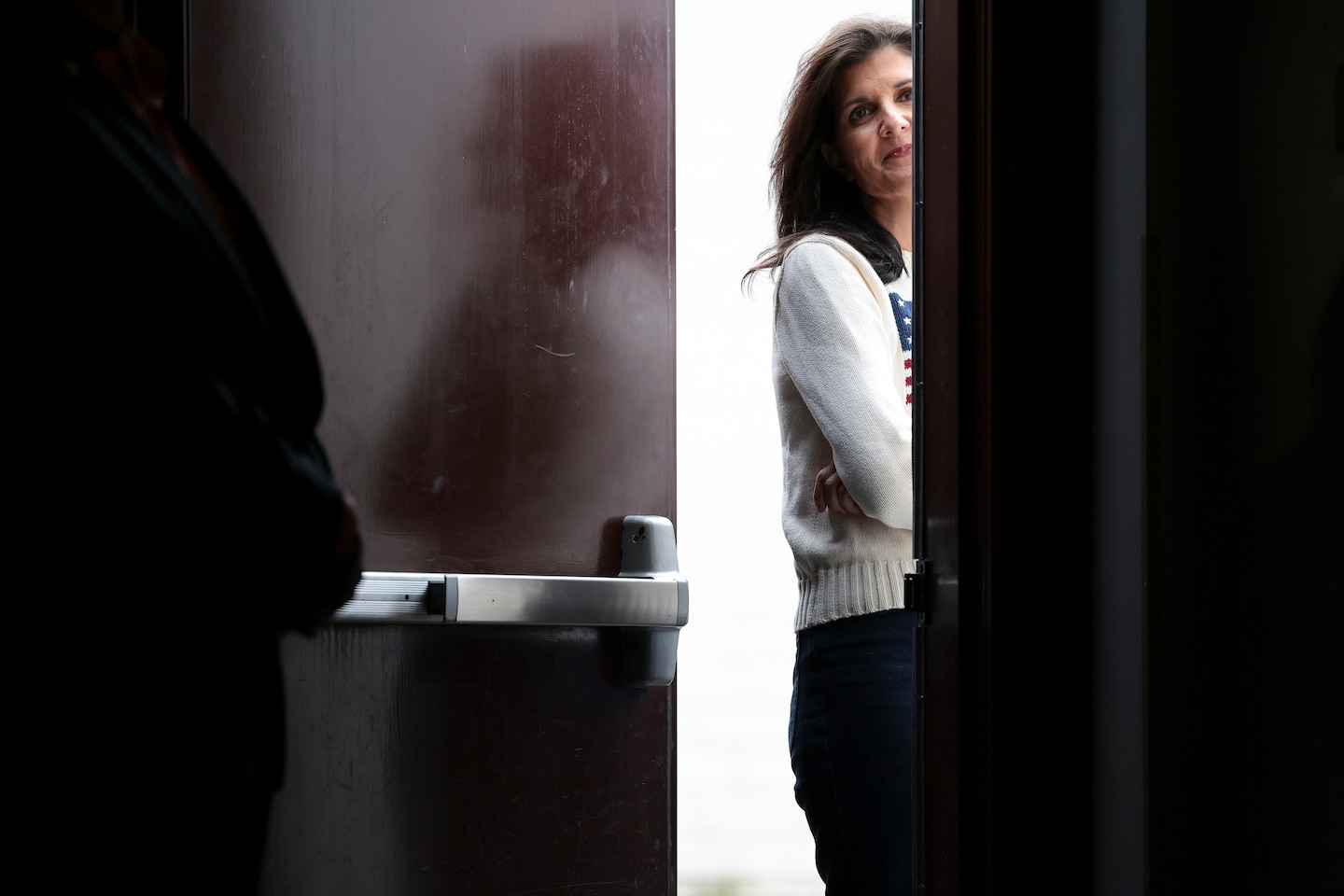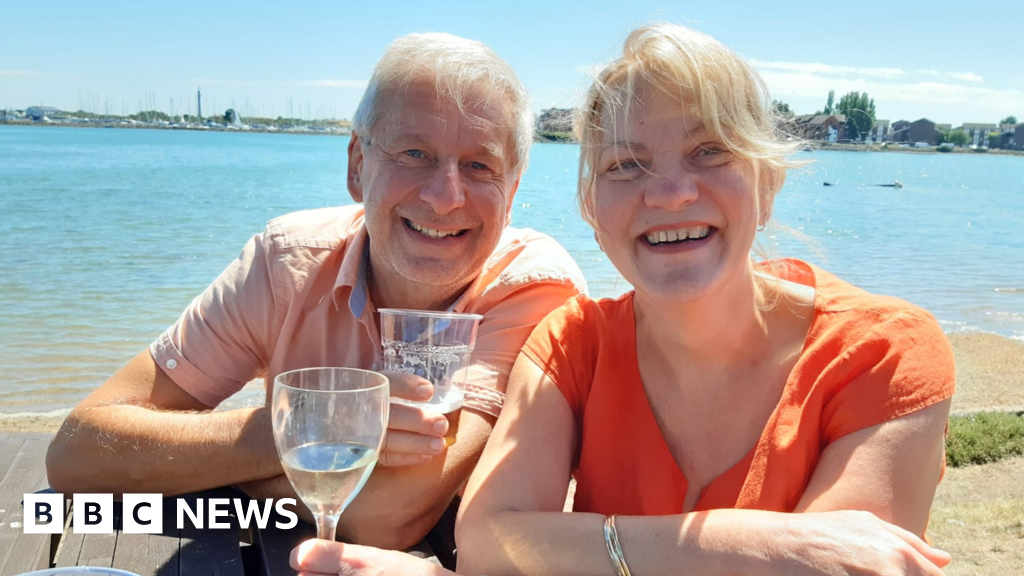
Nikki Haley’s nearly all-White high school lacked racism education, some students say
- Politics
- February 20, 2024
- No Comment
- 321
At her new high school, where the daughter of Indian immigrants was one of the only non-White students, some classmates said in interviews that they weren’t adequately instructed about South Carolina’s history of divisive racial issues — from Jim Crow laws to Ku Klux Klan raids to lynchings.
Most glaringly, they said, was a lack of emphasis on the Orangeburg Massacre, a brutal confrontation two decades earlier in which White law enforcement officers killed three Black students and injured dozens of others who had been trying to integrate a bowling alley a few miles from the prep school campus. One other classmate said he was taught about the Orangeburg Massacre in an advanced placement course with limited enrollment.
To be educated at Orangeburg Prep was to “swim in the current” of the way Whites thought and were taught, said Katrice Shuler, the valedictorian of Orangeburg’s 1989 class, who recalls sitting through classes with Haley. “It could be very easy for someone to go through the school system, the private school system, and feel that, oh, racism isn’t a problem because they haven’t been negatively affected by it,” said Shuler, who is White.
Neither Haley nor officials at Orangeburg Prep responded to questions from The Washington Post about her time at the school, and thus it could not be determined what she was taught there.
Haley’s formative years in Orangeburg — which she doesn’t mention in either of her memoirs — are a largely untold chapter in one of the most complex and contentious parts of her journey from a minority woman in the South to the would-be leader of a Republican Party that largely discounts systemic racism in the United States. While Haley, 52, often acknowledges incidents of racism that affected her growing up as a child of Indian American immigrants, she has also steadfastly argued against widespread racism being a problem in America. On the campaign trail running for president, she recently went further, arguing that even with slavery at the nation’s founding, “We’ve never been a racist country.”
In Bamberg and Orangeburg, many of Haley’s former neighbors and classmates have struggled to reconcile those claims with the history of where she grew up — an area that serves as a microcosm of a nation riven by race, where former plantations line ribbons of riverfront and reach deep into the piney woods. Haley’s father worked at one historically Black college in the area and her mother received a degree from another, where many of the Orangeburg Massacre victims were enrolled.
“Nikki Haley is the most shrewd, talented politician in the country. She is not racist by any stretch,” said former state Rep. Bakari Sellers, a Democrat who is Black and grew up in Bamberg County and whose father was among those wounded in the Orangeburg Massacre. “But she knows better. … Either you are wholly ignorant, which she’s not, or you’re intellectually dishonest for the purpose of political gain.”
Haley declined an interview request and did not respond directly to a detailed list of questions from The Post. Instead, her spokeswoman, Nachama Soloveichik, said that Haley rejects what she called the premise that “America is systematically racist and rotten to its core.”
“America has a long, checkered, and at times tragic history with race, but since its founding, our nation has been dedicated to the principle that all are created equally,” she said in a statement. “Over two and a half centuries, we have greatly improved on that legacy of freedom and equality, and it is our job to continue to do so.”
In the part of South Carolina where Haley grew up, plantations once lined the shores of the Edisto River. Nearby was the plantation of David Flavel Jamison, the president of the state’s secession convention, which had voted in 1860 to make South Carolina the first state to secede from the Union, starting the Civil War.
Among the largest plantations was Woodlands, about three miles from where Haley was raised. It had been owned by William Gilmore Simms, one of South Carolina’s principal defenders of slavery, and in 1860 comprised 2,700 acres with 70 people enslaved at the site, according to historical records.
For much of the century after the Civil War, Black people faced Jim Crow restrictions and segregation until court-ordered integration and equality legislation took hold in the early 1960s.
Still, by 1968, Orangeburg — a predominantly Black city of about 13,000 in a majority-Black county — continued to face protests against segregation. The city’s division could be seen along downtown’s Russell Street. At one place is a soaring memorial to Confederate soldiers. Farther down Russell Street is South Carolina State University, a historically Black college. In between these points was the All-Star Bowling Alley, whose owner had refused to admit Black people.
Images from the 1968 Orangeburg Massacre
See more photos from the horrific day and its aftermath.
In early February 1968, Black students for several days held sit-ins and other protests around the bowling alley, and then, on Feb. 8, the unarmed students assembled around a bonfire on the campus of South Carolina State. In response, tanks rolled into Orangeburg and hundreds of officers carrying Remington 12-gauge pump shotguns marched on Russell Street to meet the protesters.
The officers began firing indiscriminately into the crowd, killing three Black protesters: Delano Middleton, a 17-year-old high-schooler, who was shot seven times; and two 18-year-old university students, Henry Smith, who was shot three times, and Samuel Hammond Jr., who was shot once in the back. At least 28 others were wounded. The Rev. Martin Luther King Jr., who was assassinated two months later, called it “the largest armed assault undertaken under color of law in recent Southern history.”
Among those wounded was Cleveland Sellers, a 23-year-old Black civil rights leader who was shot in his armpit and arrested in connection with the riot. In an interview, Sellers, the father of Bakari Sellers, said he was falsely accused of having climbed on top of a firetruck, flicking a cigarette lighter, and saying “Burn, baby, burn.” He was convicted in state court and jailed for seven months (and pardoned in 1993.)
Nine White officers were charged by the federal government for abuse of power, but all were found not guilty, leaving Sellers as the only person punished.
About the same time the White officers went on trial for the Orangeburg killings, Haley’s parents were preparing to return to India after her father, Ajit Singh Randhawa, finished his PhD. at the University of Vancouver in British Columbia. But then he was offered a job teaching biology in Bamberg County at Voorhees College — a historically Black school founded in 1897 after white supremacists had burned the first two schools opened by a Black woman, Elizabeth Evelyn Wright.
As an Indian immigrant, Haley’s father might have had difficulty getting a teaching job at some South Carolina colleges, but Voorhees was welcoming. Haley’s mother, Raj Randhawa, also had a connection to a historically Black school, attending South Carolina State to get a master’s in education, according to a school spokesman.
In 1969, their first year in South Carolina, the Randhawas were living in a cramped second-floor apartment by the Voorhees campus and looking for a home in nearby Bamberg, a city of 3,400 people at the time.
Then, a local White physician, Michael C. Watson, took the family to tour a house in Bamberg, but neighbors plotted to stop them from renting it. Watson, who died in 2016, recalled in his memoir, “Catching the Clouds: A Physician’s Purpose Filled Life,” that they told him they feared a non-White family moving in: “If Dr. Watson gets that house rented to that family, the next thing you know we’ll have black people all over the neighborhood.”
Watson took the Randhawas to a second house, but the owner there also refused to rent to them.
As Haley recounted in the first of her two memoirs, “Can’t Is Not An Option: My American Story,” her parents set roots in an area that had an “ugly residue of a less tolerant time.” No one would rent to her parents, and “Word quickly got around that my father worked at the ‘black school,’ and besides that, he and my mom were obviously foreigners themselves.”
Their only option was to buy a home, she wrote, and they were told that, “They couldn’t entertain black people in it.”
Finally, Watson found a third home that was available for sale, and the Randhawas bought it. Soon after, Haley was born — delivered by Watson.
She was raised in that house and others in Bamberg, and she was educated in the nearby public schools.
When Haley was eight years old, she recalled in her memoir, she prepared for a beauty pageant by learning to sing Woody Guthrie’s ballad about equality, “This Land is Your Land.” But Haley was disqualified from competing because of her brown skin, she said, in a contest held separately for Black and White people. “We were the first Indian family ever to live in Bamberg,” Haley wrote in her memoir. “In a time and place that only knew black and white, we didn’t fit either category.”
As Haley put it, she and her family “tried to fit in.” At Bamberg Elementary, she was given the role of Pocahontas in a school play, which led boys to dance around her “doing the American Indian hand-to-mouth call” and left her wondering whether the teachers realized she “wasn’t that kind of Indian,” she wrote in her memoir.
After recounting these stories of her elementary school trials, however, Haley stressed that things improved and Bamberg “adopted us as its own.”
Classmates who spoke to The Post said they could recall no racial incidents directed at Haley or others.
“I never saw her unhappy in Bamberg. We had a great class and never had any problems,” classmate Buzzy Bunch said.
After finishing ninth grade, Haley left the Bamberg system for a new school just up the road in Orangeburg, a city of 13,000 that today is 73 percent Black.
Orangeburg Prep emerged from two other academies, both of which had formed in direct response to integration. One was Wade Hampton, named after a white supremacist, a former Civil War Confederate general who had been the state’s governor; the school’s mascot was the Rebel, and a Confederate flag flew outside. The second school was called Willington.
Both were facing financial difficulties. A January 1986 story in The State, a Columbia newspaper, quoted an official from Wade Hampton as saying that neither it nor Willington had been able to obtain tax-exempt status, noting that the IRS required private schools “to adopt policies of nondiscrimination” before gaining such approval.
The two schools agreed to the policies as they merged to become Orangeburg Prep. Yet even with a new name and new policy, its reputation as a haven for White students remained, residents said.
“It was a place of refuge for the children of people in the White community who did not want their youngsters to go to public schools that were now integrated,” said William Hine, a retired history professor at South Carolina State.
Haley enrolled at the beginning of the next academic year, taking classes in the same building where Wade Hampton had been located. Haley did not respond to questions from The Post about why she changed schools. Haley’s memoir skips past her later years in Bamberg, and makes no mention of her move to Orangeburg Prep.
Haley’s departure was well-known in the close-knit community of Bamberg. Some longtime locals say that race could be a motivation for some of those who enrolled there, though it’s unclear what led Haley to make the move.
“People went to get away from the Blacks,” said Willie Cam Nelson, 91, whose ancestor was enslaved at a Bamberg County plantation and who taught mathematics under Haley’s father at Voorhees.
Nelson added that she didn’t know why Haley chose the academy. Although the family lived in Bamberg, Haley’s mother at one point ran a clothing boutique in Orangeburg.
Yearbooks suggest that Haley was an engaged student, appearing in a school play as one of “two old ladies.” She later recalled in a commencement address that she had so many detentions for talking in class that a Saturday morning session was created for her.
“I was not a brainiac. I was not popular,” she said. “I actually was the student that made them start doing Saturday morning detentions.”
Some students say that the legacy of Orangeburg Prep as a nearly all-White school born from segregation academies was clear in the curriculum and the composition of the student body.
Jack Shuler, who attended the school a few years after Haley and is not related to Katrice Shuler, wrote a book about growing up in Orangeburg, “Blood and Bone,” after realizing that he had not been properly taught about the Orangeburg Massacre.
“In the 1980s and 1990s Orangeburg Prep was a quiet manifestation of Jim Crow,” Shuler, who is White, wrote in the book, published during Haley’s governorship. “Though it expressly advertised that it would admit anyone regardless of race or creed, few people of color attended Orangeburg Prep. There were a few notable exceptions, including 1989 graduate, now South Carolina governor, Nikki Haley, the daughter of immigrants from India. But for the most part, this avenue of integration — the classroom — was effectively closed for my generation in Orangeburg and perhaps for future generations.”
Hine, who is White, said there was little discussion among White people in Orangeburg about the massacre that had occurred on his campus. “That was part of, ‘Let’s sweep this history under the rug. We don’t want to talk about it,’” he said.
Katrice Shuler, the valedictorian, told The Post that she only realized later that she had bowled at the same alley where protests against segregation had led to the killing of the three Black students, but “I was never told until after I left Orangeburg that the same bowling alley I went to was the home of the [protests followed by the] Orangeburg Massacre.”
Kevin Garrison, who was the president of Haley’s class and became friends with her, said that in his Advanced Placement history class, he was taught adequately about racial issues. But he could not say what Haley’s experience was because they were never in classes together, and he didn’t know if she took the advanced course.
“It just depends,” said Garrison, who is White. “I think teachers had a lot of independence at the time. I took AP history, so our curriculum will differ from somebody in a different class … We did talk about everything, we did talk about the Orangeburg Massacre.”
Orangeburg Preparatory Head of School Libby Ray said no one from a prior administration was available to respond to a detailed list of questions from The Post about what was taught during Haley’s attendance, the number of minorities enrolled at that time, and related questions. Ray said in an email that today “Orangeburg Preparatory Schools admits students of any race, color, and national or ethnic origin. We have 490 students enrolled, and just under 20% of our students are minorities.”
Haley returned to Orangeburg Prep in May 2014, during her first term as South Carolina’s governor, to give a commencement address in which she made it clear that her years at the school were formative.
“Everything I learned to survive, to be strong, and to be successful, I learned right here,” she told the graduating students. “Orangeburg is an amazing community.”
As she campaigns for president, Haley has based her appeal partly on nostalgia for her upbringing, writing on the platform now known as X, “Do you remember when you were growing up, do you remember how simple life was, how easy it felt? It was about faith, family, and country. We can have that again, but to do that, we must vote Joe Biden out.”
But Haley has long navigated treacherous waters in seeking to appeal to a largely White Republican Party base that views claims of racism with deep skepticism.
As a gubernatorial candidate in 2010, she assured Confederate group leaders that she had no interest in taking down the Confederate flag from the State House grounds, and refused to budge from that position when campaigning for reelection four years later, with her campaign saying a Democratic candidate’s proposal to remove it was “desperate and irresponsible.” It was only after a white supremacist murdered nine Black worshipers at a Charleston church in 2015, and the Legislature seemed on track to vote to take down the flag, that she urged passage of the measure to remove it. Her move garnered national attention and was hailed as a mark of strong leadership.
On the campaign trail, she’s waded back into similar controversy in standing by her statement that the United States has never been a racist country. That stance mystifies and infuriates many with ties to the area where Haley grew up and went to school.
Felicia Furman, who produced “Shared History,” a documentary about the Woodlands Plantation — where her ancestor was the owner — said in an interview that given the proximity of Haley’s home to Woodlands and the extent of enslavement throughout that area, she should realize why it was wrong to say that the United States has “never been” a racist country.’
Charles Orr, whose great-grandfather was the enslaved “body servant” to the plantation owner at Woodlands, was in disbelief when he heard Haley’s statements. “My response was, Nikki, no, no, no, no,” Orr said. “She should know better. She’s an educated woman.”
Today, a state law prevents taking down Confederate memorials like those in Orangeburg unless the legislature gives permission.
The bowling alley that the Black protesters sought to integrate also still stands, but it is vacant amid an empty shopping center. Community activists said an effort is underway to restore the bowling alley to commemorate the massacre.
Haley recently has made some concessions, repeatedly acknowledging that she should have mentioned slavery as the primary cause of the Civil War. But she’s also stuck to her core claims by arguing that while there is racism today, the country is not and never has been racist.
“If I grew up as a brown girl in a small, rural town, and my parents told me that I lived in a racist country, I would never have thought I had a chance,” Haley recently told radio host Charlamagne Tha God, who is Black and also grew up in South Carolina.
When the radio host pressed her again, saying, “You can’t say America has never been a racist country and then talk about the racism you’ve experienced,” she responded, “I don’t think that our country was founded to be racist,” saying it was “this amazing experiment to see if we can have freedom and democracy in a way that all men are created equal.”
Haley said that while the Confederate flag had to be taken down in 2015, she said that didn’t justify taking down Confederate memorials. She urged that new memorials to Black history be constructed.
“Add to the history,” Haley said. “Don’t erase history, because that’s what teaches us lessons.”
Alice Crites and Razzan Nakhlawi contributed to this report.
#Nikki #Haleys #allWhite #high #school #lacked #racism #education #students









